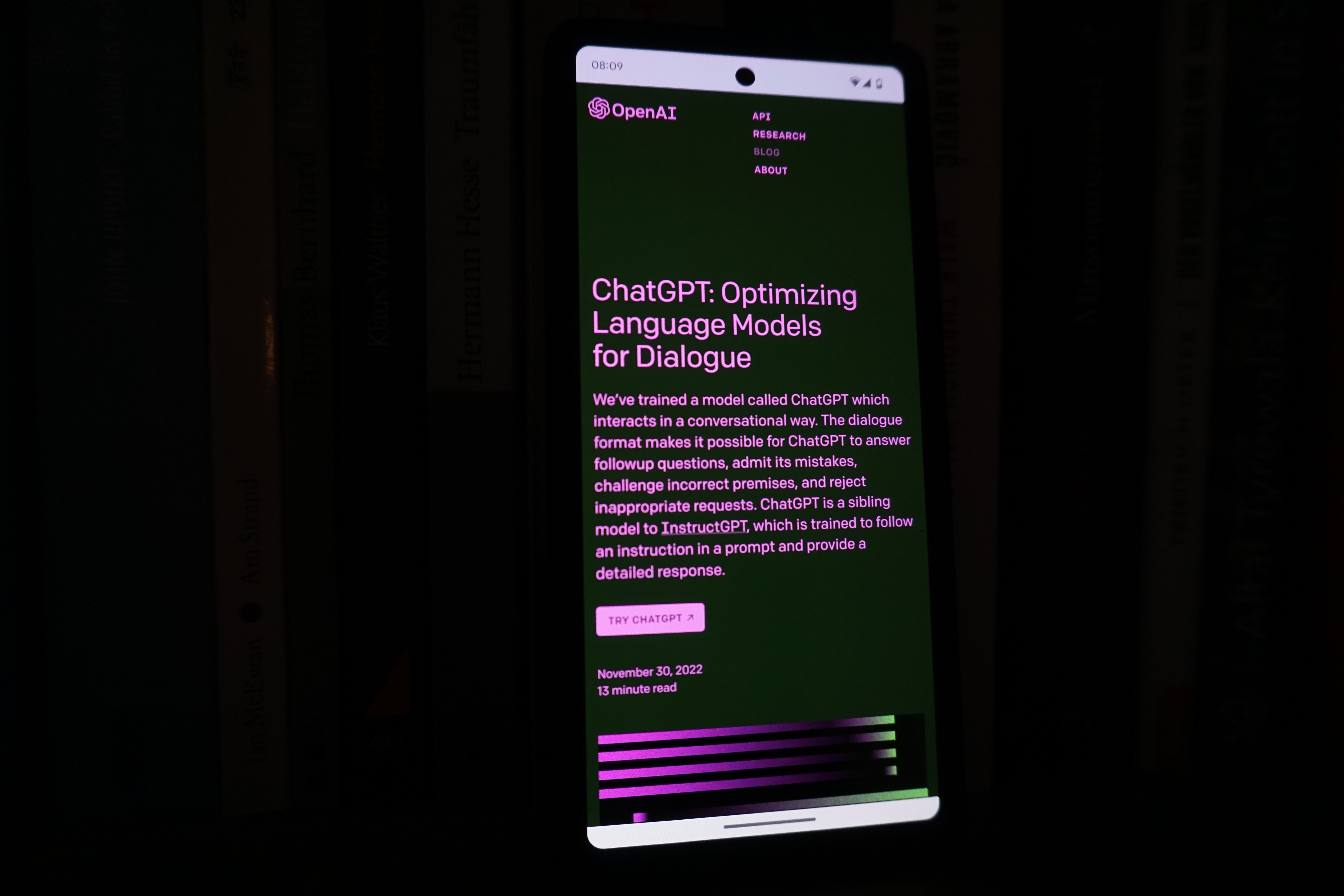ChatGPT Isn’t Designed to be A Tutor. Students Are Still Using it As One
More than 10 percent of K-12 and college students said they study with ChatGPT in addition to a tutor, according to a recent survey

ChatGPT is not designed to be a tutor, but many students are using it as such, according to a new survey.
Recently, Intelligent.com surveyed 3,017 high school and college students (aged 16-24) and 3,234 parents of younger students. Ten percent of high school and college students said they studied with ChatGPT in addition to a tutor this past year, while 15 percent of parents with school-aged children said their kids used the AI tool in addition to a tutor as well.
The survey found that among those who used ChatGPT to study:
- Nearly all have replaced some of their tutoring sessions with ChatGPT
- 95% say their grades have improved since studying with ChatGPT
- 9 in 10 prefer studying with ChatGPT over studying with a tutor
- The most common subjects students have replaced tutors for are math and science
Despite this, ChatGPT does not behave as a true tutor, says Diane Gayeski, a higher education consultant with Intelligent.com and professor of Strategic Communications at Ithaca College.
“ChatGPT is very good at being able to collect information and provide it in a very succinct way, but it's not a tutor,” she says. “A tutor is not a book, and it's not content. What a real tutor does is to try to figure out where your misconceptions are, or where you might be lacking prerequisite concepts or skills, and then present information in a way that you can effectively learn it and apply it.”
ChatGPT’s Weakness as a Tutor
What makes a good tutor effective is their ability to respond to a student’s individual needs and to provide multiple explanations tailored to the student. “A tutor knows how to test you to make sure that, in fact, you are able to grasp it, and that allows them to adjust how they are delivering concepts," Gayeski says. "ChatGPT is not designed to do that.”
That doesn’t mean the AI is not helpful to learning. The platform's problems with accuracy aside, it can be a fairly effective way to deliver content to students.
Tools and ideas to transform education. Sign up below.
“I did a couple of little experiments with it, where I asked it to tutor me in the basic principles of accounting, and it gave me five or six major principles or facts about how accounting is done,” Gayeski says. “Then I asked it to create some questions and it created questions based on the specific wording that it had presented to me. But I couldn't answer those questions and it can't diagnose whether I got those answers right or wrong.”
The Potential for ChatGPT-Like Technology and Other AI Tutors
While ChatGPT does not yet mimic the behavior of a human tutor, many in education believe there is tremendous potential for AI tutors, intelligent tutoring systems powered by generative AI.
Some form of machine learning is built into almost every learning app and many of these provide students with lots of opportunities to be drilled on their knowledge. However, generative AI can potentially create new answers in response to specific questions and respond to student needs the way a good tutor might. Khan Academy is using GPT technology in its new Khanmigo tutor and Duolingo uses similar technology to power real-time conversations in Duolingo Max, its top-tier subscription service.
Many corporate learning systems also incorporate artificially intelligent tutoring.
“The real tutoring systems [offer] much more dialogue, kind of a Socratic dialogue, back and forth, and are a lot more present,” Gayeski says. “They make sure the person is understanding. If they're not understanding, it provides specific remediation until they get it right.”
Uses for ChatGPT Right Now
While ChatGPT is not a perfect tutor yet, students do seem to enjoy using it as a way to understand content. Gayeski says educators should encourage this use because interacting with AI will be part of the future.
“We all need to learn how to be better at providing good prompts to ChatGPT, and the better we are at giving it prompts, the more likely that it will give us something that's useful,” Gayeski says. “We also have to teach people to fact-check it. That's a little bit harder. Because at least when you're doing a web search, you're finding whatever a primary source is, it could be wrong, but at least you understand where the source is. But ChatGPT just comes up with these kinds of statements, and you're not even sure where it found them.”
Learning how to make the best use of ChatGPT and other AI tools -- and not be misled by them -- will likely be a vital part of education for years to come.
To share your feedback and ideas on this article, consider joining our Tech & Learning online community here
Erik Ofgang is a Tech & Learning contributor. A journalist, author and educator, his work has appeared in The New York Times, the Washington Post, the Smithsonian, The Atlantic, and Associated Press. He currently teaches at Western Connecticut State University’s MFA program. While a staff writer at Connecticut Magazine he won a Society of Professional Journalism Award for his education reporting. He is interested in how humans learn and how technology can make that more effective.

